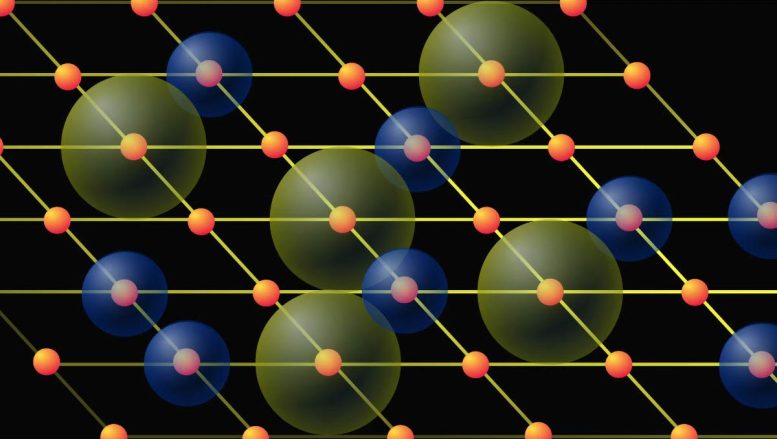
A quantum scientist has developed a method to enhance quantum simulators, devices crucial for exploring unsolved problems in quantum physics. This advancement could significantly impact various fields, including finance, encryption, and data storage, by making quantum simulators more controllable and versatile. Credit: SciTechDaily.com
Creating a quantum computer powerful enough to tackle problems we cannot solve with current computers remains a big challenge for quantum physicists. A well-functioning quantum simulator – a specific type of quantum computer – could lead to new discoveries about how the world works at the smallest scales. Quantum scientist Natalia Chepiga from Delft University of Technology has developed a guide on how to upgrade these machines so that they can simulate even more complex quantum systems. The study is now published in

Illustration of a quantum simulator with atoms trapped into a square lattice with lasers. The small spheres at the corners are atoms in their lowest energy state. The ones inside a blue sphere are exited (higher in energy) by the first laser, the ones inside yellow spheres are excited by the second laser (even more higher in energy). Credit: TU Delft
Recipe
The protocol is a recipe – a set of ingredients that a quantum simulator should have to be tunable. In the conventional setup of a quantum simulator, rubidium (Rb) or cesium (Cs) atoms are targeted by a single laser. As a result, these particles will take up electrons, and thereby become more energetic; they become excited. “I show that if we were to use two lasers with different frequencies or colors, thereby exciting these atoms to different states, we could tune the quantum simulators to many different settings,” Chepiga explains.
The protocol offers an additional dimension of what can be simulated. “Imagine that you have only seen a cube as a sketch on a flat piece of paper, but now you get a real 3D cube that you can touch, rotate, and explore in different ways,” Chepiga continues. “Theoretically we can add even more dimensions by bringing in more lasers.”
Simulating Many Particles
“The collective behavior of a quantum system with many particles is extremely challenging to simulate,” Chepiga explains. “Beyond a few dozen particles, modeling with our usual computer or a supercomputer has to rely on approximations.” When taking the interaction of more particles, temperature, and motion into account, there are simply too many calculations to perform for the computer.
Quantum simulators are composed of quantum particles, which means that the components are entangled. “Entanglement is some sort of mutual information that quantum particles share between themselves. It is an intrinsic property of the simulator and therefore allows to overcome this computational bottleneck.”
Reference: “Tunable Quantum Criticality in Multicomponent Rydberg Arrays” by Natalia Chepiga, 15 February 2024, Physical Review Letters.DOI: 10.1103/PhysRevLett.132.076505